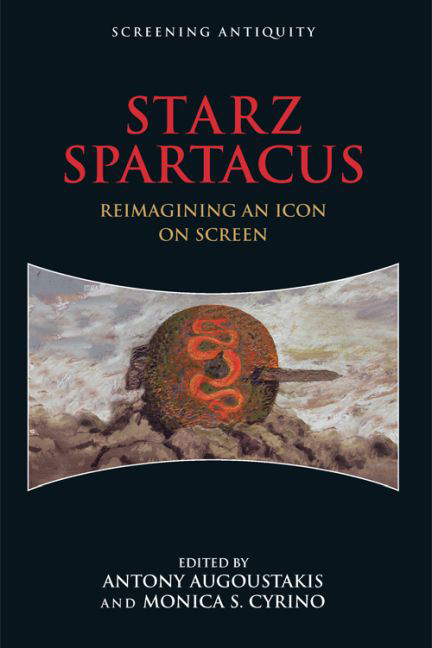Book contents
- Frontmatter
- Contents
- Series Editors' Preface
- Editors' Acknowledgments
- Contributors
- List of Illustrations
- Episode Listing
- Introduction: Reimagining a New Spartacus
- PART I HEROES AND HEROISM
- PART II SOCIAL SPACES
- 5 Upward Mobility in the House of Batiatus
- 6 Social Dynamics and Liminal Spaces
- 7 Building a New Ancient Rome
- PART III GENDER AND SEXUALITY
- PART IV SPECTACLE AND VIOLENCE
- Filmography
- Bibliography
- Index
6 - Social Dynamics and Liminal Spaces
from PART II - SOCIAL SPACES
Published online by Cambridge University Press: 27 April 2017
- Frontmatter
- Contents
- Series Editors' Preface
- Editors' Acknowledgments
- Contributors
- List of Illustrations
- Episode Listing
- Introduction: Reimagining a New Spartacus
- PART I HEROES AND HEROISM
- PART II SOCIAL SPACES
- 5 Upward Mobility in the House of Batiatus
- 6 Social Dynamics and Liminal Spaces
- 7 Building a New Ancient Rome
- PART III GENDER AND SEXUALITY
- PART IV SPECTACLE AND VIOLENCE
- Filmography
- Bibliography
- Index
Summary
The villa and ludus of Batiatus and Lucretia. The streets of Capua. The arena. The house of Crassus. The battlefields. The slopes of Mt. Vesuvius. The tents of Roman soldiers. These spaces, among others, in STARZ Spartacus may seem at first glance like mere background to viewers – the passive settings for the action of the series. But as film scholars have long shown, spaces are imbued with meaning and can provide a glimpse into the world of characters. As Myrto Konstantarakos notes, “Space is not merely the setting of stories but actually generates the narrative both in prose and films, assuming the status of a character and becoming the fabric of the narrative itself.” While all the spaces in Spartacus hold significance, this chapter will focus on liminal spaces and argue that they make visible the power struggles of the series’ main characters. Concrete physical thresholds, such as cliffs, balconies, or gates, are obvious liminal spaces, but so are spaces that function as gateways to change while being physically more self-enclosed. In the Spartacus series, these spaces in-between and at the margins reveal and aid acts of transgression, transformation, and resistance.
SPACE IN SPARTACUS
In film studies, scholars have considered how space affects viewers’ perceptions of what is onscreen. The same cinematic action would not have the same meaning if set in a different space. Obviously, the arrangement and use of sets and space in a production can provide context, such as temporal and geographical information. Yet if we merely consider space as a “container” for information, then we are neglecting its other roles. In addition to being a passive display of context, space can be the creator of mood and the set-up for psychological and emotional moments on screen, it can provide characters with distinct opportunities, and it can suggest to the audience the significant ideas in a scene.
The onscreen spaces may also serve as points of engagement for the viewer. Robert Burgoyne, in his work on the epic in film, discusses ways in which the “physicality” of a film, including “imposing sets and the accumulations of detail,” may give the audience a feeling of “being in history.” While the spaces in Spartacus do contain much detail, they do not have the veneer of reality of other series, as in the case of the HBO-BBC production Rome (2005–7).
- Type
- Chapter
- Information
- STARZ SpartacusReimagining an Icon on Screen, pp. 97 - 110Publisher: Edinburgh University PressPrint publication year: 2017



